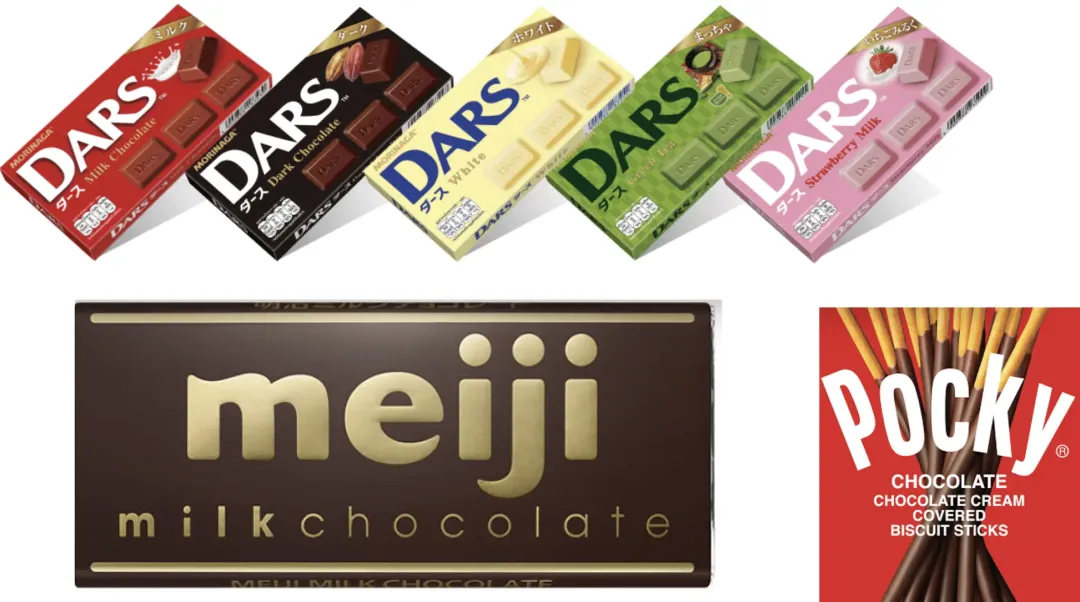If you want to understand Japanese chocolate, it helps to learn about the various chocolate companies in Japan.
Ever since chocolate was introduced to Japan, Japanese companies have created all sorts of unique and tasty forms of chocolate.
Some of these varieties have become quite famous internationally. Others are relatively obscure outside of Japan, but remain highly popular among the Japanese people and fans of Japan.
Let’s take a look at Japanese chocolate. We’ll compare five big, well-known, and popular Japanese chocolate companies. But first, how did chocolate get to Japan in the first place?
Japanese Chocolate History
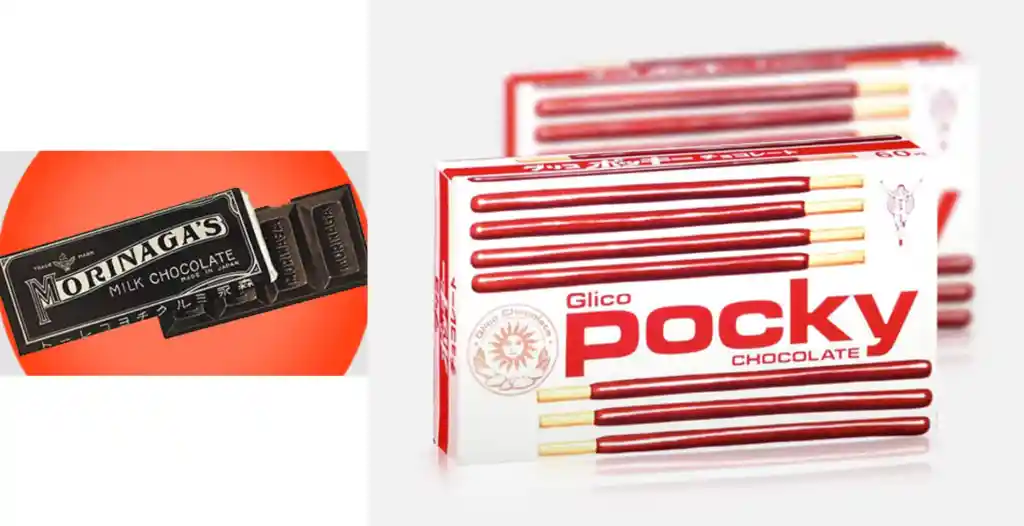
The history of chocolate begins in ancient Mesoamerica, where the cacao plant originated. When the Spanish conquered Mexico, they brought chocolate back to Europe. Europeans would also be the first to bring chocolate to Japan.
The history of chocolate in Japan is a bit murky. A lot of online sources give 1797 as the date for the first chocolate in Japan (although Wikipedia hedges with “between 1789 and 1801”). This was during Japan’s Edo Period, when Japan cut itself off from the rest of the world. At the time, the Dutch were the only Europeans allowed to trade with Japan.
However, thanks to Japan’s isolation, chocolate would remain relatively obscure in Japan until the Meiji Era. Even during the Meiji Era, it was still a luxury item. In fact, some sources state that chocolate was used as medicine during this period.
It wasn’t until the early 1900s (end of the Meiji Era/ beginning of the Taisho Period) that Japanese companies began to manufacture chocolate — including the first company on our list.
List of Japanese Chocolate Companies
- Meiji
- Royce’
- Ezaki Glico
- Morinaga
- Lotte
1. Meiji
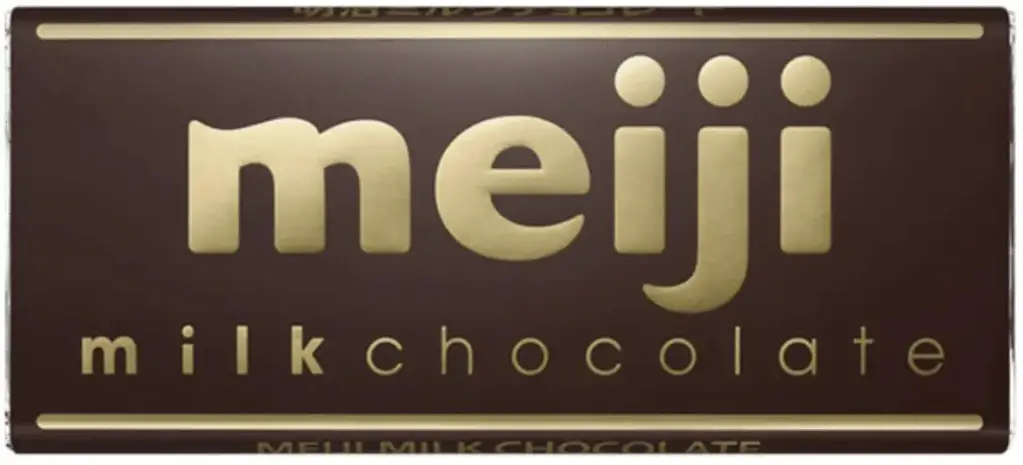
- Founded: 1916 (first chocolate bar, 1926)
- Examples: Meiji Milk Chocolate bar, Hello Panda, Kinoko No Yama, MeltyKiss, Apollo Strawberry
- Website: https://www.meiji.com/global/food/chocolate/
Meiji has been making chocolate for almost a century. The company makes chocolate bars, plus a lot of chocolate snacks such as Hello Panda.
In Japan, the company’s flagship chocolate is the Meiji Milk Chocolate bar, which it has been making since 1926. Some people compare it with the classic, iconic Hershey’s Milk Chocolate bar (for better or for worse). Both have been around for a long time, and both are considered pretty good, if not great, chocolate.
Internationally, Meiji’s most famous chocolate product might be Hello Panda, the little chocolate-filled biscuits with pictures of pandas printed on them. Around here, you can find them at some regular supermarkets as well as at Asian American stores. It’s similar to Lotte’s Koala March.
Meiji is a snack food company with the full title Meiji Seika Kaisha, Ltd. The company was founded in 1916 (as a sugar company), although it didn’t start making chocolate bars until a decade later. Meiji Seika is part of Meiji Holdings, a big, typical Japanese conglomerate.
Note: Despite the name, Meiji was founded during the Taisho Era.
Wanna take a bite? Buy Meiji chocolate from Japan.
2. Royce’
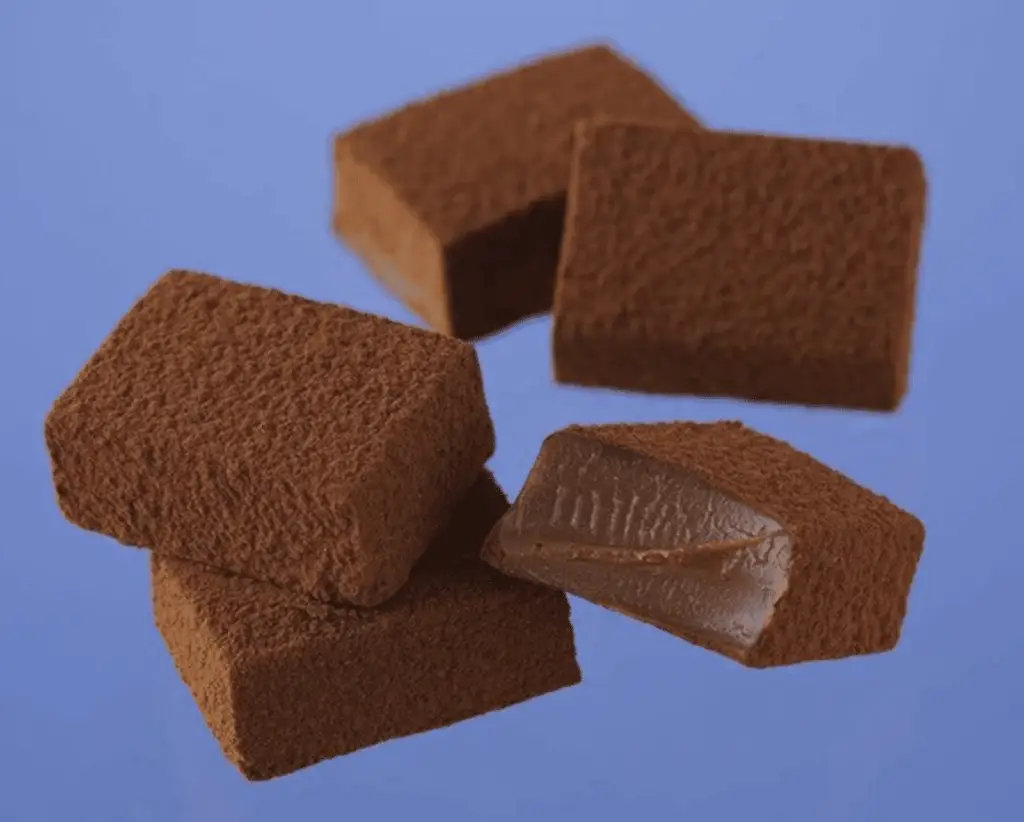
- Founded: 1983
- Examples: Nama Chocolate, Pure Chocolate, Potato Chip Chocolate
- Website: https://roycechocolate.com/; also https://www.royce.com/contents/english/
Royce’ could be called the Rolls Royce of Japanese chocolate.
In many ways, Royce’ is the opposite of Meiji. Whereas Meiji chocolate is just one division of a corporate giant, Royce’ does just chocolate, and it does it well. Royce’ is also a newcomer compared to century-old Meiji. It was founded in 1983 in Sapporo, Hokkaido — far from Meiji’s Tokyo headquarters.
Royce’ is best known for Nama Chocolate, a type of ganache made with cacao and cream. The chocolate is also dusted with cocoa powder. Nama means “raw” or “fresh” in Japanese. It’s been described as a very smooth chocolate.
Royce’s Nama Chocolate comes in a lot of different flavors, from au lait (milk) to bitter. Royce’ also makes white chocolate and matcha green tea flavors of its flagship chocolate.
Royce’s Pure Chocolate is a bit more traditional than the Nama Chocolate, but still with Royce’s quality. Royce’s chocolate-dipped potato chips are a unique snack which combines the salty crunch of a chip with the sweet taste of Royce’ chocolate.
Royce’ also makes various other shapes and styles of chocolate, including chocolate wafers, chocolate bars, baton cookies, and the extremely thin Prafeuille Chocolat.
Try it today! Buy Royce chocolate from Japan.
3. Ezaki Glico
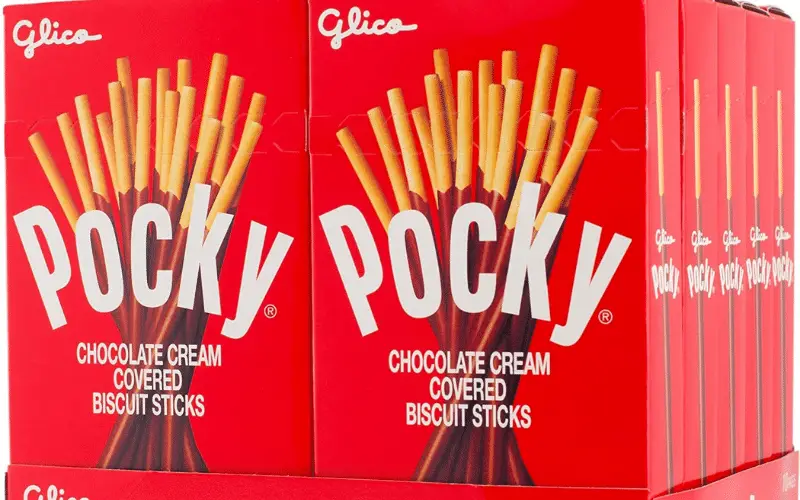
- Founded: 1922
- Examples: Pocky, Pretz, Mikado
- Website: https://www.glico.com/global/; also https://pocky.glico.com/global/
One word, and one word alone, defines Ezaki Glico — Pocky.
Of course, technically speaking, that’s not entirely true. Ezaki Glico does make other products, some of which are not stick-shaped. Glico’s first product was a caramel candy cube known as Glico Caramel. Glico is named for glycogen, one of the ingredients. Riichi Ezaki was the founder, hence Ezaki Glico.
Pocky was invented in 1966. Today, the chocolate-covered biscuit sticks are beloved worldwide. In addition to milk chocolate, Pocky sticks come in a variety of other flavors, including Strawberry, Almond Crush, Matcha Green Tea, Cookies and Cream, Chocolate Banana, etc.
Some of these products are made for markets outside of Japan. In Europe, Pocky is known as Mikado. And I swear I can taste the difference between Pocky imported from Thailand, and Pocky from Japan.
On the Japanese website, the company advertises some Pocky flavors not found in the United States (except at Japanese import supermarkets). For example, consider Sato Nishiki Cherry Pocky — named for a specific type of cherry grown in certain regions of Japan — or Yubari King Melon Pocky.
Pocky is everywhere but you can only buy certain Pocky flavors in Japan.
4. Morinaga

- Founded: 1899
- Examples: Morinaga Milk Chocolate, DARS, Peanut Chocoballs, Milk Cocoa
- Website: https://www.morinaga.co.jp/company/english/
Morinaga earned a place on our list by popularizing the idea of Japanese women giving chocolate on Valentine’s Day.
You know all of those anime episodes where the girls make chocolate treats in February? You can thank Morinaga for that. Morinaga started campaigning for Valentine’s Day in Japan in 1960.
Like Meiji, Morinaga is another one of Japan’s giant corporations. And its various divisions make a wide variety of products, ranging from milk to tofu to Hi-Chew candy. But we’re here for the chocolate.
Morinaga started making milk chocolate bars in 1918, and the company started producing Milk Cocoa (hot chocolate) a year later. According to reports, Morinaga was the first company to make hot chocolate powder in Japan. Since 1993, Morinaga has also made multiple varieties of DARS chocolate bars.
Buy Morinaga chocolate from Japan.
5. Lotte
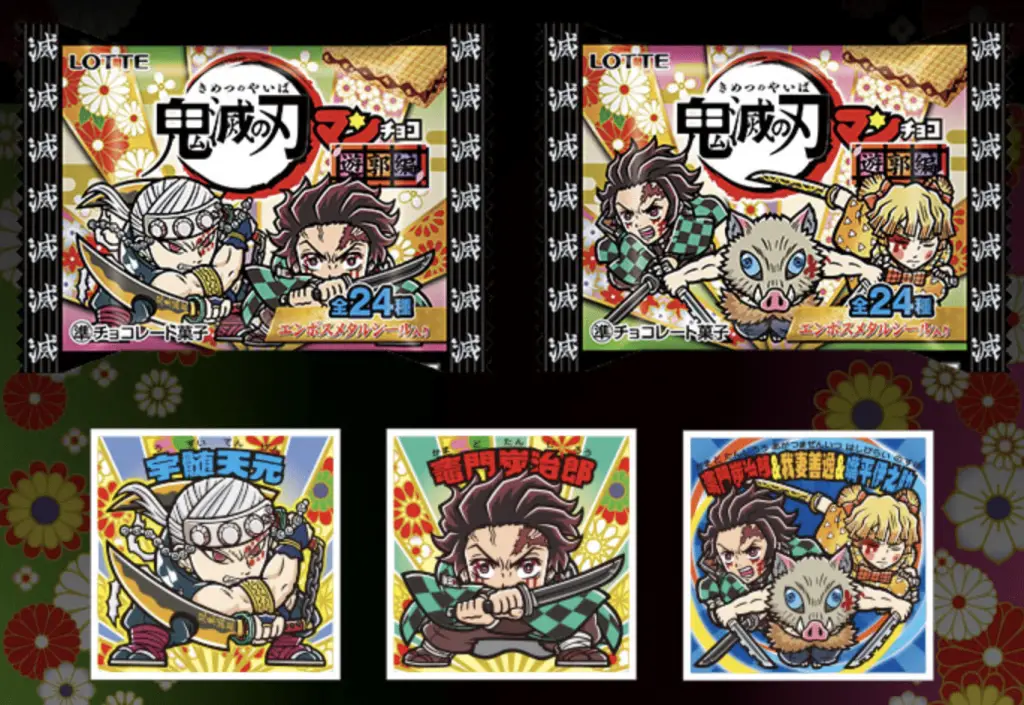
- Founded: 1948 (chewing gum); 1967 (confectionery)
- Examples: Crunky, Bikkuriman, Koala March, Choco Pie
- Website: http://www.lotte.co.kr/global/en/main.do
Lotte is actually a South Korean conglomerate, but it has roots in Japan. The company’s Korean founder attended school in Japan, and the company itself started out in Tokyo. Lotte has been in Japan for so long that one can be forgiven for assuming that it is Japanese. (Just to add to the confusion, the name comes from a character in a German novel.)
In any case, Lotte started out by selling chewing gum in postwar Japan. Lotte Confectionery did not come into existence until 1967, and the company introduced the Crunky chocolate bar in 1974.
Crunky now comes in many varieties, including Crunky Bits, Strawberry Chocolate Balls, Corn, and Hojicha Latte. Lotte also makes anime-themed Crunky bars featuring Demon Slayer: Kimetsu no Yaiba characters.
Of course, if you’re looking for anime and Japanese pop culture tie-ins, the obvious Lotte choice would be Bikkuriman. For years, these chocolate and peanut wafers have featured stickers of various characters. Naturally, this was perfect for anime crossovers.
Buy Lotte chocolate from Japan.
Conclusion
I hope you enjoyed this list of Japanese chocolate companies. Of course, this is not an exhaustive list, and there are many other companies which didn’t make the list.
Other companies which I considered included:
- Nestle Japan, a subsidiary of Swiss giant Nestle. Best known for its unique Japanese Kit Kat bars — Matcha Green Tea, Melon, Cheesecake, Mint, Orange, etc.
- Bourbon, makers of numerous candies and sweets, including Alfort Chocolate Biscuits and other excellent European-style chocolate products.
- Fujiya, home to mascot Peko-chan and Milky candy, but also manufacturers of many chocolate products.
If this article makes you hungry, check out our list of 10 Best Japanese Chocolate Everyone Should Try.

